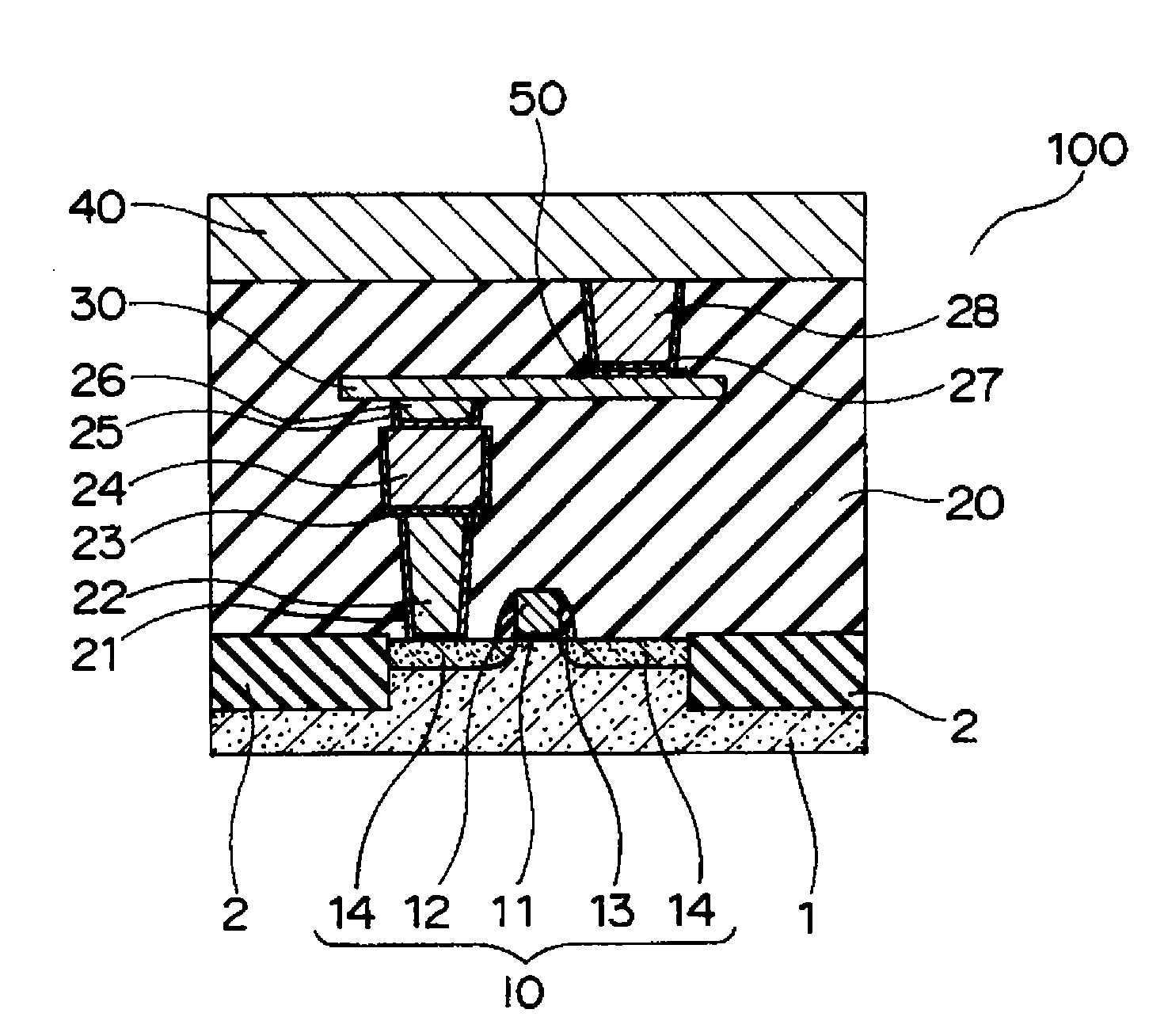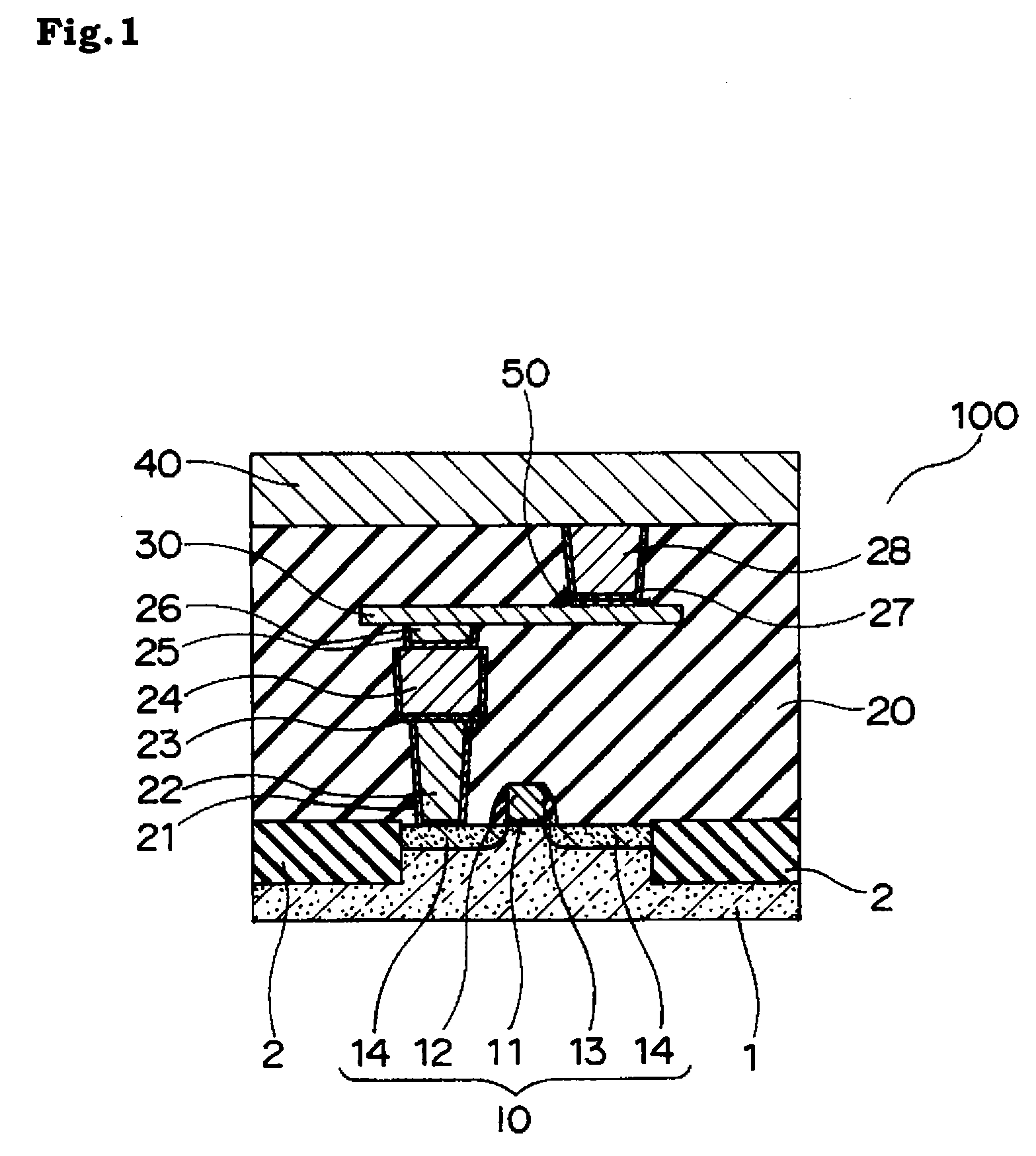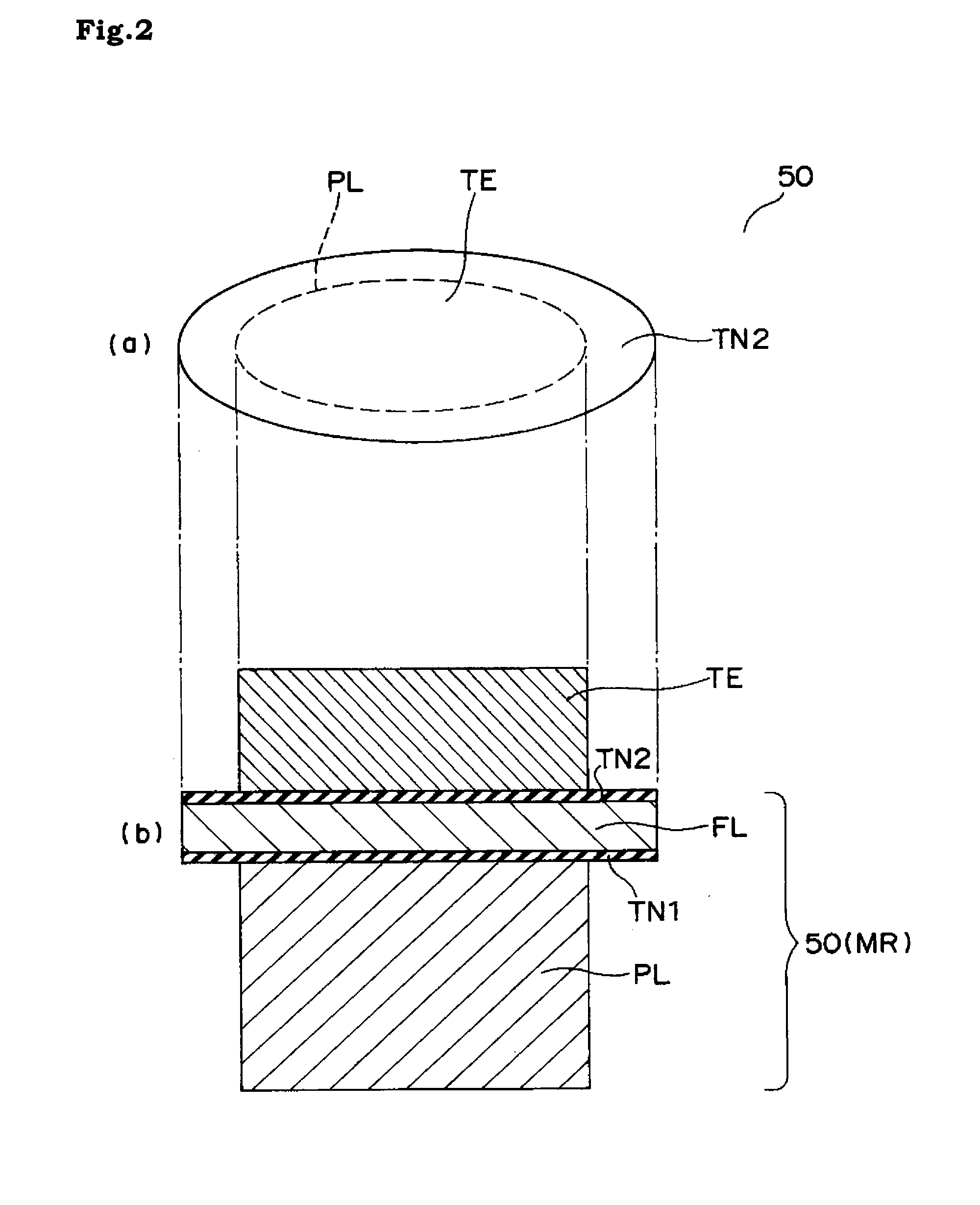Magnetic memory element and magnetic memory device
a magnetic memory and memory layer technology, applied in the direction of magnetic field-controlled resistors, magnetic-on-the-semiconductor devices, electrical devices, etc., can solve the problems of not contributing substantially to the magnetization inversion of the memory layer, the magnetic characteristics of the peripheral part of the memory layer are sometimes deteriorated, and the center part cannot be inverted in some cases, so as to achieve good magnetic characteristics
- Summary
- Abstract
- Description
- Claims
- Application Information
AI Technical Summary
Benefits of technology
Problems solved by technology
Method used
Image
Examples
embodiment 1
[0023]FIG. 1 shows a partial cross-sectional view of a magnetic memory device (STT-MRAM) (Spin Transfer Torque-MRAM) according to the embodiment of which the entire body is denoted with 100.
[0024]The magnetic memory device 100 contains a semiconductor substrate 1 of silicon or the like. An element separation insulating film 2 of silicon oxide or the like is formed in the semiconductor substrate 1. A transistor 10 for selecting elements is formed in the element formation region separated by the element separation insulating film 2. The transistor 10 contains a gate insulating layer 11 formed on the semiconductor substrate 1 and a gate electrode 12 formed thereon. A side wall 13 of silicon oxide or the like is formed in both sides of the gate electrode 12. A source / drain region 14 is formed in the semiconductor substrate 1 in a manner that the gate electrode 12 is sandwiched.
[0025]An interlayer insulating layer 20 of, for example, silicon oxide is formed on the semiconductor substrate...
embodiment 2
[0045]FIG. 5 show a magnified drawing of another magnetic memory element of the embodiment 2 of which the entire body is denoted as 150 and FIG. 5(a) shows a top drawing and FIG. 5(b) shows a cross-sectional view. In FIG. 5, the symbols same as those in FIGS. 1 and 2 show the same or equivalent parts.
[0046]The magnetic memory element 150 contains a fixing layer (PL) connected with a lead-out electrode 30. On the fixing layer (PL), a tunnel insulating layer (TN1) of a nonmagnet (dielectric), a memory layer (FL) of a ferromagnet, and a top electrode (TE) are successively layered.
[0047]In the magnetic memory element 150 of this embodiment 2, the end part of the fixing layer (PL) is arranged in the inner side than the end part of the tunnel insulating layer (TN1). Further, the distance between the end part of the fixing layer (PL) and the end part of the memory layer (FL) is preferable to be equal to or more than the thickness of the memory layer (FL). On the other hand, the top electro...
embodiment 3
[0050]FIG. 6 show a magnified drawing of a magnetic memory element of the embodiment 3 of which the entire body is denoted as 250 and FIG. 6(a) shows a top drawing and FIG. 6(b) shows a cross-sectional view. In FIG. 6, the symbols same as those in FIGS. 1 and 2 show the same or equivalent parts.
[0051]The magnetic memory element 250 of the embodiment 3 has a structure formed reversely upside down to that of the magnetic memory element 150 of the embodiment 2.
[0052]That is, a memory layer (FL) and a tunnel insulating layer (TN1) are formed on a bottom electrode (BE) (equivalent to the lead-out layer 30 in FIG. 1) and a fixing layer (PL) is formed thereon. The end part of the fixing layer (PL) is arranged in the inner side than the end parts of the memory layer (FL) and the tunnel insulating layer (TN1). Further, the distance between the end part of the fixing layer (PL) and the end part of the memory layer FL is preferable to be equal to or more than the thickness of the memory layer ...
PUM
 Login to View More
Login to View More Abstract
Description
Claims
Application Information
 Login to View More
Login to View More - R&D
- Intellectual Property
- Life Sciences
- Materials
- Tech Scout
- Unparalleled Data Quality
- Higher Quality Content
- 60% Fewer Hallucinations
Browse by: Latest US Patents, China's latest patents, Technical Efficacy Thesaurus, Application Domain, Technology Topic, Popular Technical Reports.
© 2025 PatSnap. All rights reserved.Legal|Privacy policy|Modern Slavery Act Transparency Statement|Sitemap|About US| Contact US: help@patsnap.com



